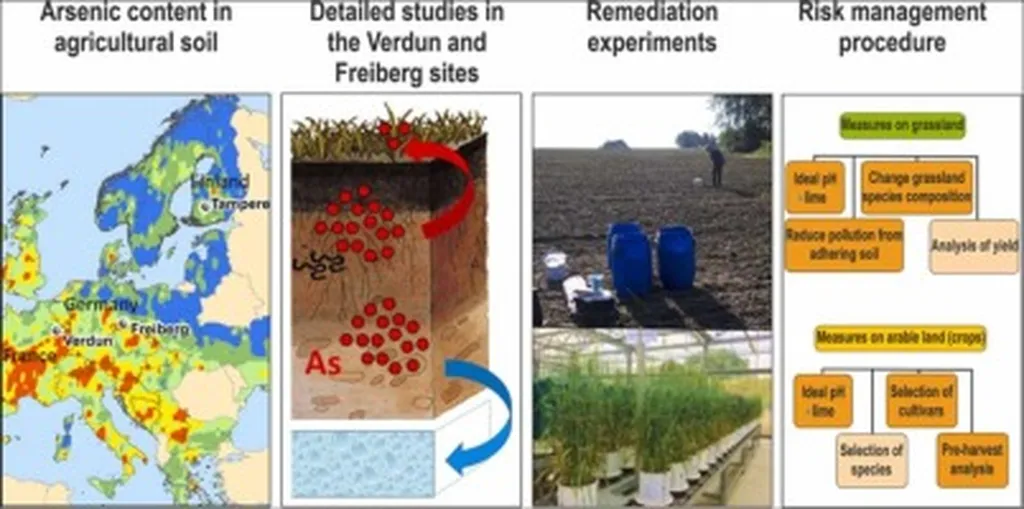In the heart of Beijing, a team of researchers led by Ze-Wen Wang from the Research Center for Eco-Environmental Sciences, Chinese Academy of Sciences, has made a significant stride in the realm of soil arsenic (As) contamination. Their work, published in the journal *Ecotoxicology and Environmental Safety* (translated as “生态毒理学与环境安全学报”), is set to redefine how we assess and manage arsenic risks in arable soils, with profound implications for food safety and agricultural practices.
Arsenic, a carcinogenic metalloid, poses a significant threat to human health, primarily through dietary exposure. Current soil total arsenic standards often fall short in accurately estimating arsenic risks and aligning with food safety standards. This misalignment makes arable soils a critical pathway for arsenic to enter the food chain, potentially endangering public health.
Wang and his team proposed a novel approach: using soil bioavailable arsenic (BAs) as a more accurate risk indicator to replace total arsenic measurements. To establish a crop safety-based soil arsenic risk assessment framework, the researchers integrated field sampling and literature data, analyzing 100 leafy vegetable-soil pairs, 182 wheat-soil pairs, and 66 rice-soil pairs.
One of the key achievements of this study was the development of standardized BAs extraction protocols. For dryland soils, they used 0.5 M NH₄H₂PO₄, while for paddy soils, they employed 0.43 M HNO₃. These protocols laid the groundwork for building BAs-based models that predict arsenic levels in crops with remarkable accuracy (R² > 0.7 for all crops).
The team derived crop-specific safety thresholds for soil BAs: 17.62 mg/kg for leafy vegetables, 38.99 mg/kg for wheat, and 0.79 mg/kg for rice. These thresholds represent a significant advancement in precision agriculture, particularly in arsenic-endemic regions.
“The traditional total arsenic standards often lead to overestimation or underestimation of risks,” explained Wang. “Our BAs-based thresholds and predictive models significantly outperformed the traditional standards, increasing accuracy by 57.4% for wheat and 74.4% for rice.”
The implications of this research are far-reaching. By focusing solely on soil BAs, the need for measuring additional soil physicochemical properties is eliminated, streamlining the risk assessment process. This efficiency is crucial for the energy sector, particularly in regions where arsenic contamination is prevalent and agricultural practices are intertwined with energy production and land use.
The study’s findings could shape future developments in precision agriculture, ensuring that food production is both safe and sustainable. As Wang noted, “This research proposes a novel strategy to predict arsenic accumulation in agricultural products, striking an optimal balance between analytical efficiency and human health protection.”
In the quest for safer food production, this research marks a critical step forward, offering a science-based approach to managing soil arsenic contamination. The integration of bioavailable arsenic measurements into risk assessment frameworks could revolutionize how we safeguard our food supply and protect public health.

